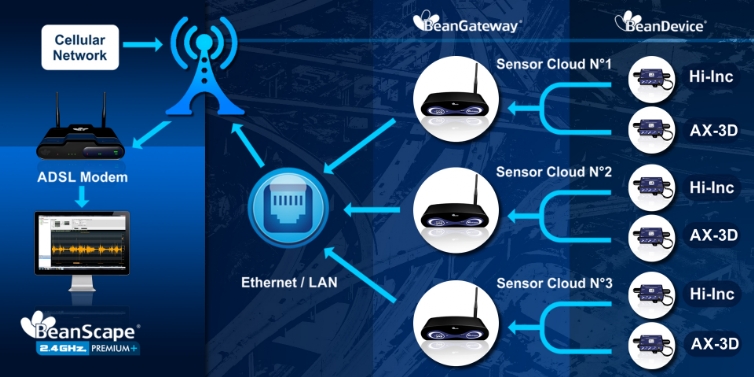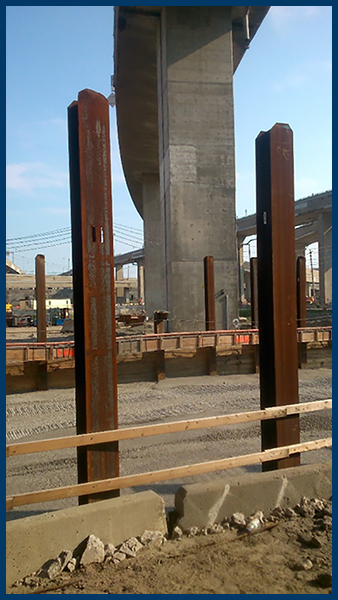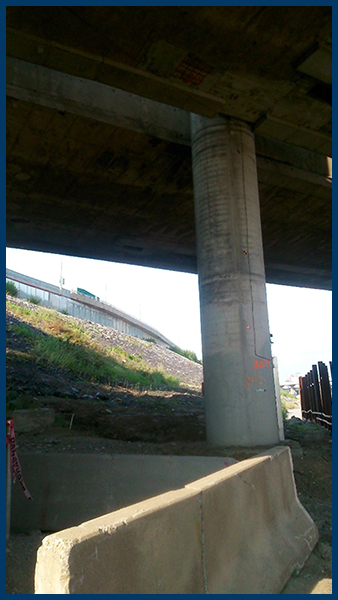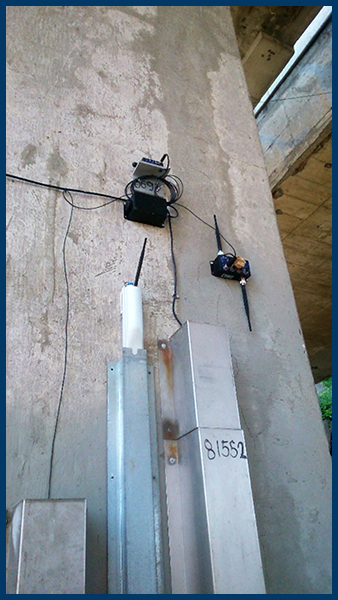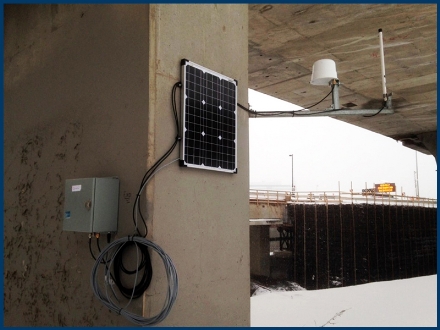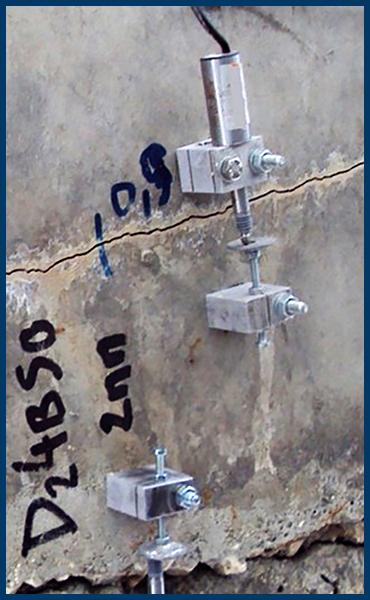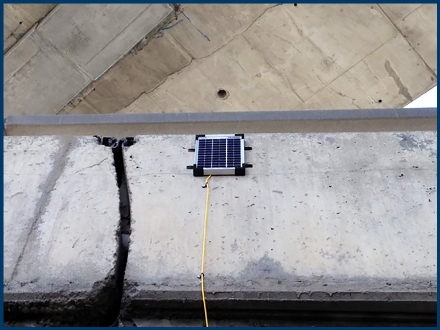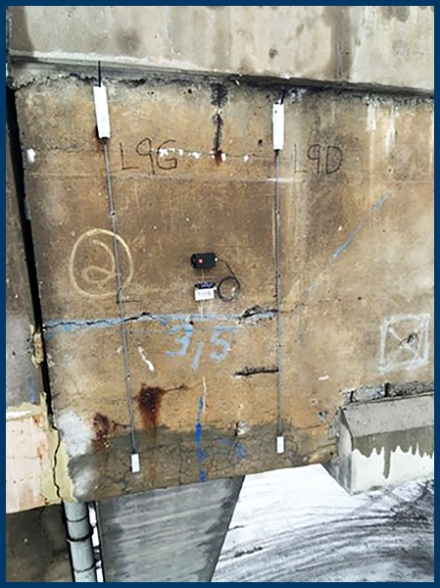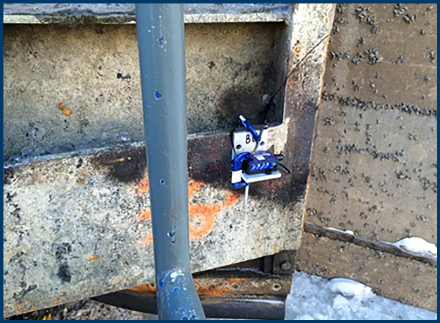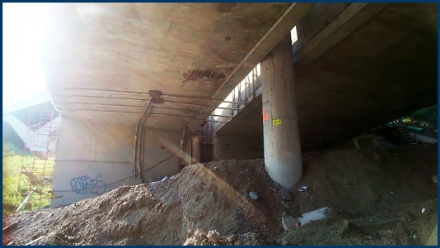Large-scale deployment of Wireless IOT Sensors on a freeway interchange
Applications
Location: Montreal, Canada
Site monitored since: February 2015
Description of the structure
Beanair Wireless IOT sensors was deployed for assessing the impact of construction-related activities and evaluating the effect of structural retrofitting. Additionally, inherent monitoring of environmental loads and influences, operational loads, and traffic patterns and densities were used to collect a database of field measurements for providing feedback during the interchange structure extension.
A total of 300 wireless IOT sensors were deployed for monitoring vibration, inclination, cracks, and deformation on the interchange structure:
• Vibration response of the bridge from ambient excitation was measured by using an accurate wireless accelerometer mounted on the interchange pillar. A sampling rate of 100 Hz was configured on concrete structure and 400 Hz on the steel structure. Resonance frequencies of the structure were established by extracting the spectrum on the structure.
• Wireless inclinometers with an accuracy of ±0.05° and a measurement range of ±15° were used to monitor structure sinking during the construction work.
• Displacement sensors (LVDT and Potentiometer technologies) with a maximum stroke of 20 mm were mounted on the interchange pillars.
Caption 1: Underside of the various overpasses comprising the Turcot Interchange.
overall tasks
Our Wireless IOT sensors were deployed for assessing the impact of construction-related activities and evaluating the effect of structural retrofitting.
Additionally, inherent monitoring of environmental loads and influences, operational loads, and traffic patterns and densities were used to collect a database of field measurements for providing feedback during the interchange structure extension. A total of 300 wireless sensors were deployed for monitoring vibration, inclination and deformation on the interchange structure:
• Vibration response of the bridge from ambient excitation was measured by using an accurate wireless accelerometer mounted on the interchange pillar. A sampling rate of 100 Hz was configured on concrete structure and 400 Hz on the streel structure.
• Wireless inclinometers with an accuracy of ±0.05° and a measurement range of ±15° were used to monitor structure sinking during the construction work.
• Several wireless crack meters (LVDT technology) with a maximum stroke of 20mm were mounted on interchange pillars. Crack meter can only be used on existing cracks and cracks evolution were compared to the resonance frequencies observed on the interchange pillars More than 25 wireless networks with the same NTP clock source (provided by a 3G/4G modem) were deployed on the monitoring site. Wireless Sensor nodes were synchronized by using a two-way ranging technique. This means that there is no event that triggers the sensor nodes, but the nodes should take a sample at precisely the right time. This was achieved via immediate synchronization (where sensor nodes receive the order to immediately take a sample and time-stamp it) or anticipated synchronization (where the order is to take the sample at some future time, the target time). Anticipated synchronization is necessary if it cannot be guaranteed that the order can be transmitted rapidly and simultaneously to all involved sensor nodes. This is especially the case if sensor nodes are more than one hop away from the node giving the order (mesh or cluster-tree networks).
REMOTE ACCESS TO MONITORING SITE BASED ON PORT FORWARDING
Technical Challenges
Network bottleneck and aggregation capacity of a wirelesse sensor networks
A review of recent wireless IOT sensors deployments for structural health monitoring of bridges reveals that the networks have generally relied on either local data logging and post-sampling transmission of sensor data or on low sampling rates and/or limited numbers of sensors in order to address Wireless sensors bandwidth limitations. Such concessions severely limit the versatility and capability of a structural health monitoring system in terms of sampling duration, data acquisition rates, and spatial resolution as well as quality of the derived mode shapes.
This problem was solved by setting up several Wireless Networks at the same time and managed by an unique supervision system (BeanScape® 2.4GHz Premium).
Caption 2: Displacement and inclinometer sensors are deployed on bridges pillars
Caption 3: Wireless IOT sensors Gateway with 4G connectivity enables remote access (Ref: BeanGateway® 2.4GHz 4G)
Caption 4: Displacement sensors are connected to our Wireless DAQ System (Ref: BeanDevice® 2.4GHz AN-mV)
Caption 5: A 10W Solar Panel is powering 4 Wireless Inclinometers at the same time (Ref: BeanDevice® 2.4GHz HI-INC)
Caption 6: Wireless Inclinometers mounted on a 90° mounting bracket (Ref: BeanDevice® 2.4GHz HI-INC) are used to monitor the concrete structure
Caption 3: Wireless vibration sensors mounted on a concrete structure with a 90° mounting bracket (Ref: BeanDevice® 2.4GHz AX-3D)
Caption 2: Wireless inclinometers are screw mounted on pillars


